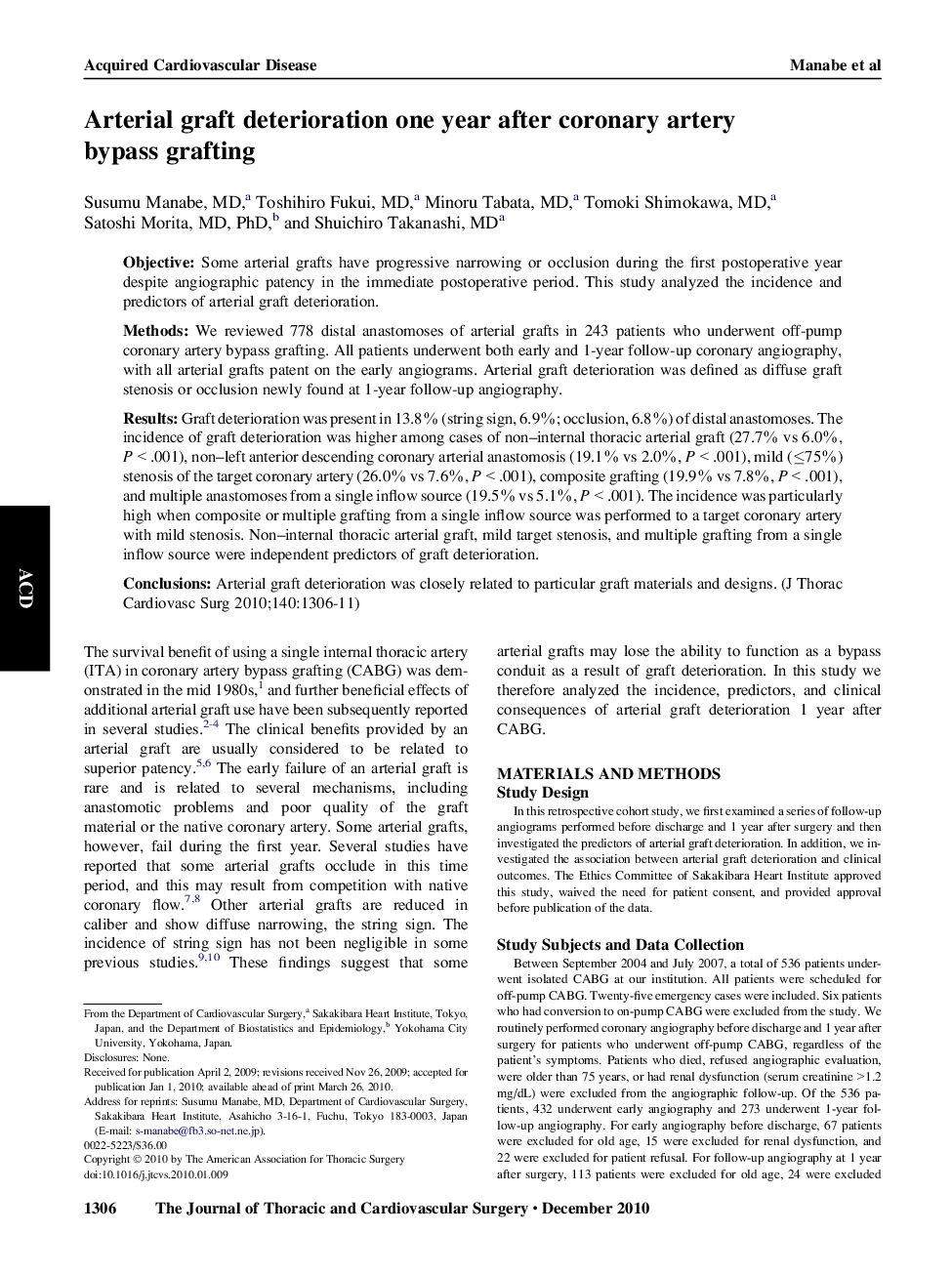| Article ID | Journal | Published Year | Pages | File Type |
|---|---|---|---|---|
| 2983026 | The Journal of Thoracic and Cardiovascular Surgery | 2010 | 6 Pages |
ObjectiveSome arterial grafts have progressive narrowing or occlusion during the first postoperative year despite angiographic patency in the immediate postoperative period. This study analyzed the incidence and predictors of arterial graft deterioration.MethodsWe reviewed 778 distal anastomoses of arterial grafts in 243 patients who underwent off-pump coronary artery bypass grafting. All patients underwent both early and 1-year follow-up coronary angiography, with all arterial grafts patent on the early angiograms. Arterial graft deterioration was defined as diffuse graft stenosis or occlusion newly found at 1-year follow-up angiography.ResultsGraft deterioration was present in 13.8% (string sign, 6.9%; occlusion, 6.8%) of distal anastomoses. The incidence of graft deterioration was higher among cases of non–internal thoracic arterial graft (27.7% vs 6.0%, P < .001), non–left anterior descending coronary arterial anastomosis (19.1% vs 2.0%, P < .001), mild (≤75%) stenosis of the target coronary artery (26.0% vs 7.6%, P < .001), composite grafting (19.9% vs 7.8%, P < .001), and multiple anastomoses from a single inflow source (19.5% vs 5.1%, P < .001). The incidence was particularly high when composite or multiple grafting from a single inflow source was performed to a target coronary artery with mild stenosis. Non–internal thoracic arterial graft, mild target stenosis, and multiple grafting from a single inflow source were independent predictors of graft deterioration.ConclusionsArterial graft deterioration was closely related to particular graft materials and designs.
